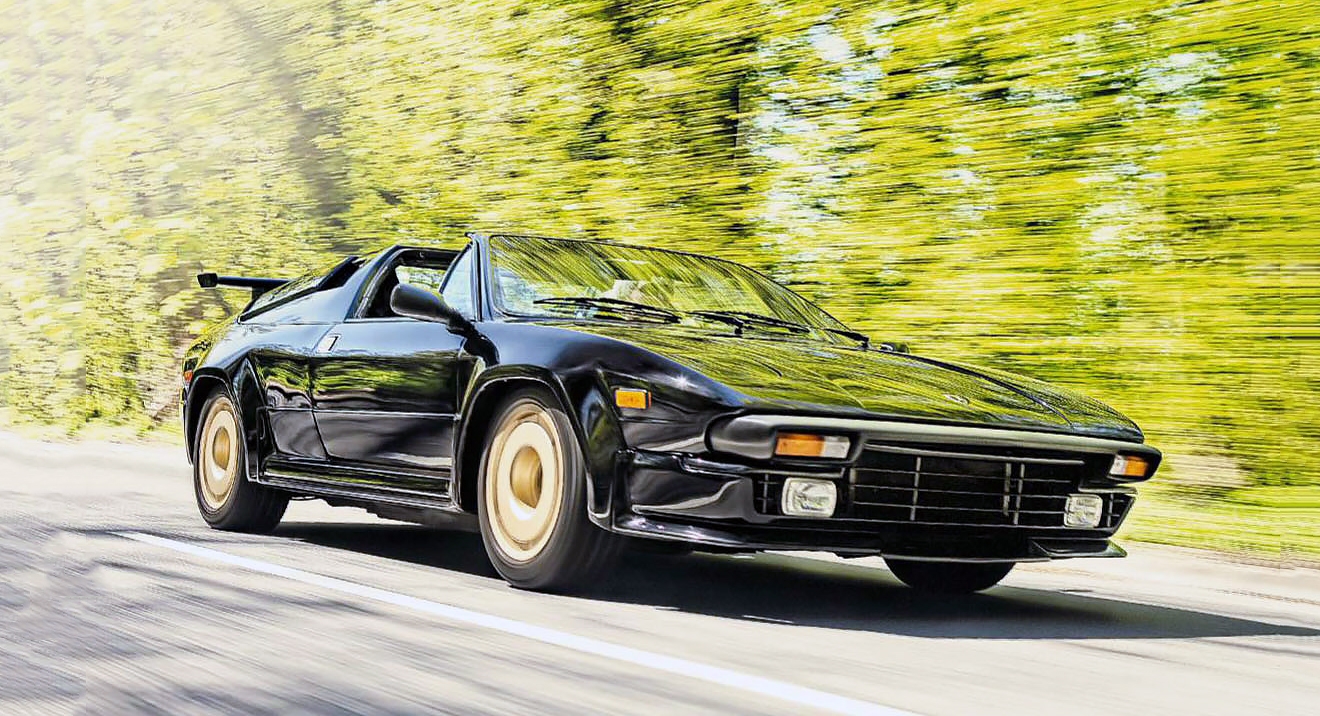
Feeling bullish? After driving the Lamborghini Jalpa, we’re wondering why it’s still considered to be a ‘nearly’ car from this fine maker of supercars. For ages in the shadow of the Countach and its great rival from Maranello, the Ferrari 308, the Jalpa was Lamborghini’s nearly car. Now its time has come… Words Rob Scorah. Photography Neil Fraser.
Acceptable in the ’80S You so rarely see these. If you took the badges off, What would you think it was? You’d probably deduce it’s from the mid-1970s to 1980s. No doubt, you’d think Italian – there’s just a little too much in the form beyond its function for a German. And yes, you would most likely think Bertone, the design house with a distinctive style – it’s this visual drama that would lead you to concluding it’s a Lamborghini.
The Jalpa isn’t conventionally beautiful. Leave the catwalk to its contemporary, the Ferrari 308 GTB. But it is packed with shock and awe, just like its big brother, the Countach. Drink in its styling, enjoy the faceted step faces, angle upon angle, and distinct changes of plane with sharply delineated separations of light and acute shadow. You can almost feel the differences physically – in your gut – when you look upon a Jalpa. Or indeed Countach when compared with a 308, 512BB or Testarossa.
Although you wouldn’t have thought so by looking at it, the Jalpa’s ancestor the Urraco induced the same mindset. Coming to market in 1973, it was a two-plus-two with a sharp, low nose and a dramatic, sweeping and seemingly widening back end (dig those louvres). It looked like it would be chic and delicate. There was the ‘designed’ interior with its arced array of instruments.
The cabin vibe had a sparse, low-slung cool. But though you may have had visions of driving it languidly in your paisley shirt listening to Les Swingle Singers on the eight track, once the V8 lit up, your whole attitude changed.
You felt a punchy mid-range – especially in the later 3.0-litre, heard the motorsport bark and realised that the chassis was really very nimble. And while everyone else was away applauding the launch of the Countach in Geneva, you realised that you could have a helluva time doing laps between Nice and Grenoble in the entry-level model.
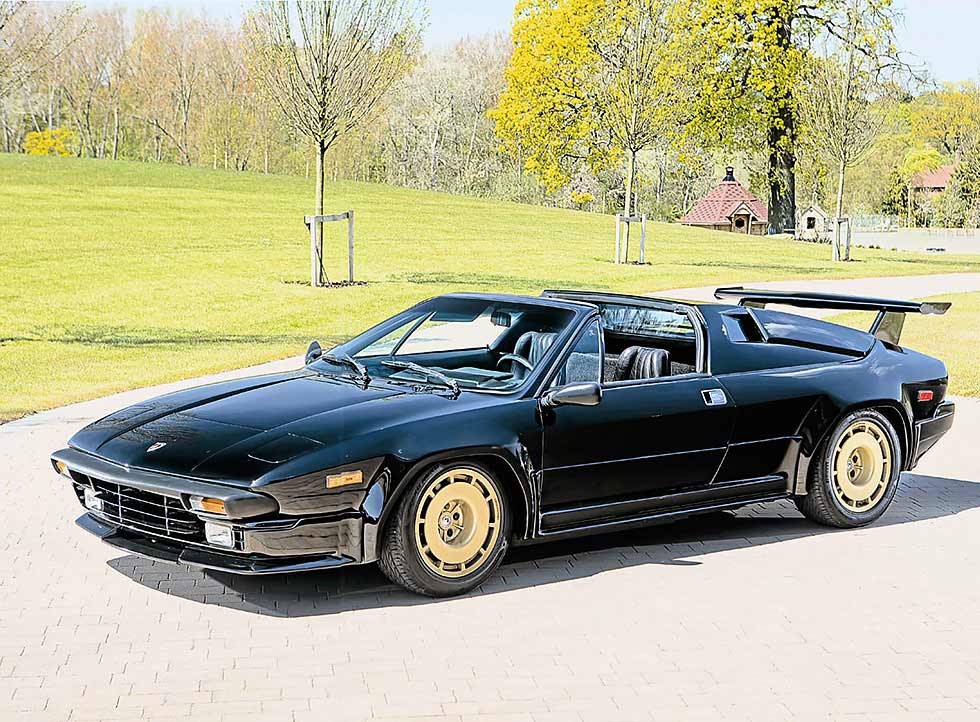
Angular bodywork looks like it’s come straight from Blade Runner.
Fewer than 800 Urracos were built before Bertone got the brief to turn it into the open-topped Silhouette, over the same chassis and 3.0-litre V8. With their stripy cloth interiors and teledial wheels, only a precious 56 of these proto-Jalpas were built between ’76 and ’79. By the time the Jalpa arrived in 1981 (with an engine bored out to 3.5 litres), the scene was once again ready for confident, high performing and rather brash new cars.
Climbing into the Jalpa now, that confidence from its maker comes through, loud and clear. Ferraris are all taste and elegance inside, tan leather and crackle black plastic – in the Jalpa, again, the interior feels designed. There’s a chunky dash, with deeply recessed gauges – strong shapes, lots of rectangular blocks with rounded edges. Despite the style, all of the instruments are easily legible – sort of. And the three most important elements; broad leather sports seat, open-claw gearstick and steering wheel (yes, angular and chunky) are where I’d want them to be.
OK, it’s that usual ‘slouch into it’ Italian car feel – splayed knees, longer arms – but compared to a lot of mid-engined creations, it feels roomy and comfortable. And it almost prepares you for the experience.
What we want from all the Italian thoroughbreds is that mechanical sensuality, and we’ll put up with almost anything to hear that hacking cough and chatter as the starter motor whines and camchains pull to open valves and the vapour fires in the bores. The small-block V8, a mere 3.5 litres, settles quickly to a steady burble, less lumpy than its American cousins and more hollow.
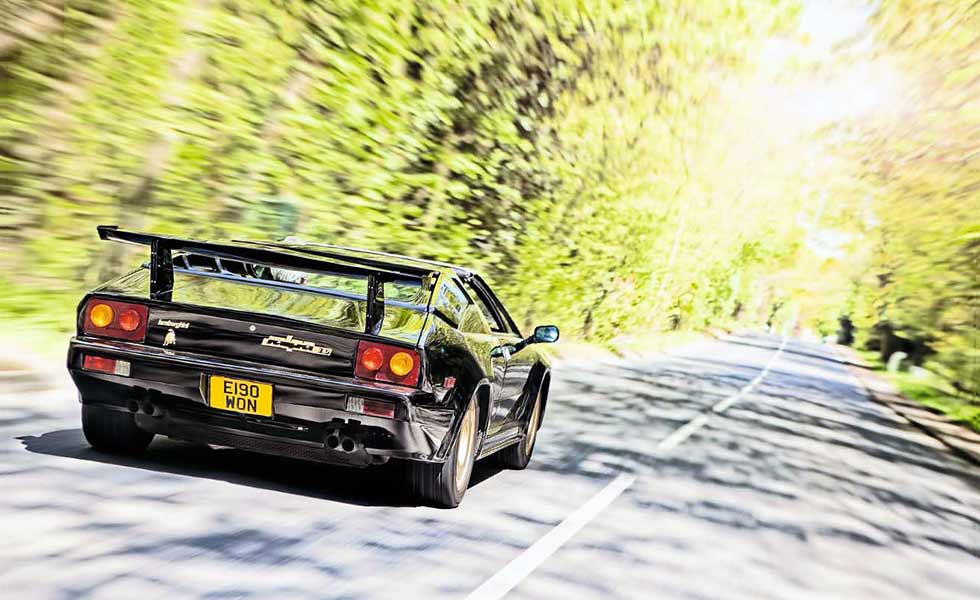
Heavy steering means wide-open roads and sweeping turns suit the Jalpa best.
Surprisingly, things are easier than you might expect. We’d been expecting temperament from the off. But it’s just (easy) clutch down, pull back towards your thigh for first and off we go. In fact, there’s a lovely immediacy about the take-up, a hint of low-down, easy-to-tap power.
Immediately, we’re loping along, sort of just hanging out, chilling, and waiting for the gearbox oil to warm up to free up the gearchange. Not that it’s exactly hard right now. Maybe this is a great reminder of how the V8 Lamborghinis were the accessible ones on just about all levels. They lived with the mortals (supposedly), a tier down from the deus ex machina that was the Countach.
But the smaller Lambos were so scarce – only 410 Jalpas were built in 10 years. You heard about them, saw the odd review or a picture, but in reality they were often banished to some shadowland by scrappy marketing and dealer organisation, the factory’s own financial woes or simply the glare of big sister’s magnificence.
Well, bowling down a tree-lined B-road, you won’t feel the lack of four cylinders. There’s more than enough eight-cylinder grunt, low down the rev range. Rocking the two-three gearchange (they’re opposite on this box) to keep it pacey between the bends comes naturally, and it tracks flatly, with the meaty steering adding friendliness. With the top off, the engine’s yarp is thrown back at you, echoing off the trees in all its alloy quad-cam V8-ness. It barks, grumbles and wails by turns, a metallic snarl rising out as you push the revs. Get past 4000rpm for a concert performance – and up to the redline for the full opera – if you have the room ahead. And having it there behind your shoulders adds an urgency and intimacy.
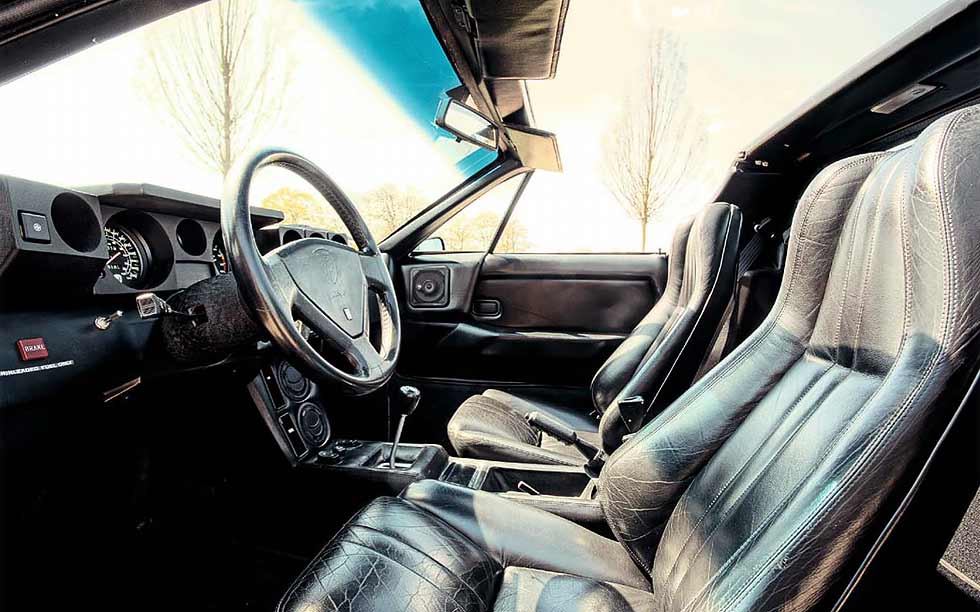
Black on black – not a bad soundtrack for a car designed for rock starstyle excess.
A light push on the throttle and the surge is immediate. Sometimes you’ll get sudden snatches of Ford GT40-ness – another V8 of course – that jagged 1960s ‘road racer’, corner-of-its-mouth growl; spooling up into a metallic yowl.
It’s somehow very theatrical; you see yourself blasting along in some Gumball movie. Then; clutch down, guttural grunt, click-clack, clutch up, grunt, growl, into a bend. As we go into a series of tight turns, things don’t feel as mid-engined as they might. It’s lacking that ‘grasshopper balancing on a blade of grass’ poise, the throttle-to-attitude connection. And there’s a fair bit of understeer. You apply some power, and the nose starts to lead it out of the bend. Lift off, and it doesn’t exactly tuck in like some Ferraris, even front-engined Ferraris, do. Though if in a head-to-head with a 308/328, it could easily lead us to conclude that the Jalpa was a far more planted, friendlier car if you start to play games with the throttle.
So now we’re looking for bends to try out, the engine dealing out that thick stream of torque. You have to love third, as it’s good for most everything around here, such is the wide spread of power. Another turn looms, time to try a little bit harder. And it’s a little ponderous – with the front end feeling like it’s washing out on a trailing throttle. That’s not the fault of the chassis, but the steering weighing up. Now just a minute, here. Before you even think it – we’re not decrying this car in terms of sheer steering weight.
Supercars of this era are expected to be on the meaty side. Remember, we’re talking about a car launched more than five years before the Honda NSX made an appearance. No, this is different. It’s about your arms needing to do just a little too much work for the radius – having to go a little too far, presumably to counter a slow-ratio rack. In some left-right-left kind of scenario, it just puts you out of rhythm or balance; your shoulders not quite poised to reply to the next turn. It just gets in the way of your groove (man). Of course, that brings us to thinking Lotus Esprit, and its perfectly-poised steering thoughts. But then you wouldn’t have the soundtrack. But still, maybe twisty B-roads aren’t the most enjoyable stomping ground for this bull.
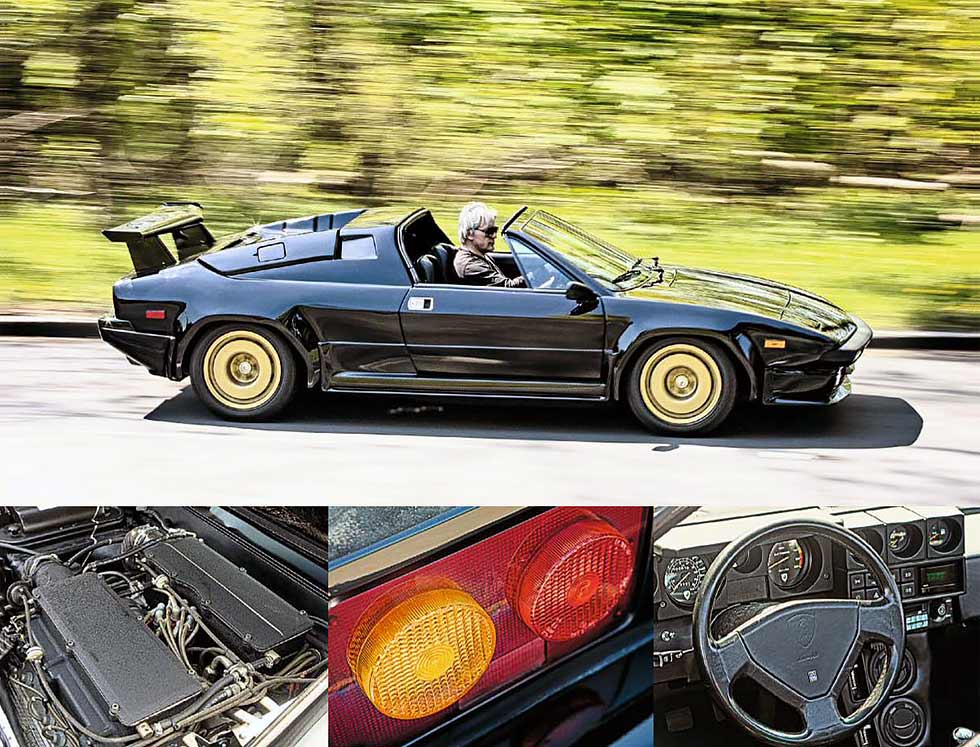
The Jalpa may be mid-engined, but it doesn’t feel scary.
The chassis is certainly capable of it, but we’re heading off to look for longer curves to test it more. As we go, it’s easy to wonder whether that boxy back end is heavier than you think. Is the rack set up to counter flicking it out? The tipping point might be high, but that stubby tail will step out quickly. We don’t want this thing going all 911 on us. In reality, all these reflections are minor. It’s a danger with the exotics we don’t often see in real life; we’re forever comparing them to their more glamorous siblings or to better-known-rivals and asking the same tired old question: which is better? The Jalpa’s answer is, of course, who cares? It’s a very rock ’n’ roll drive.
You revel in its sensations; the sound, the tactility and visual satisfaction of the gearlever snicking between the claws. That punch. It’s a car for the days when you come down to the garage and you want something less cerebral than the Esprit, but less front-engined (and a bit more modern) than the Cobra. It’s a Lamborghini supercar – and feels like one should. And a proper one at that, with a ‘hell, yeah’ kind of attitude.
The Modern Classics view
We keep going through these cycles of applause and deprecation for cars, their strengths, qualities and what they may or may not represent. But one thing that makes the Jalpa – and actually most Lamborghinis – stand out, is that you know exactly what it’s all about. It’s a pugnacious, pungent character, a tough, hands-on driver’s car.
You rarely need an all-rounder from a classic – buy a Fiesta for that. You want something that is something. You can derive intense satisfaction from the Jalpa, by standing by it, sitting in it, driving it, or maybe just by parking it. Sure, it’s compromised, and expensive to run – but go via a specialist, such as Colin Clark Engineering, and you can keep it in fine fettle. Running costs will be largely similar to a Ferrari 308, but at a lower initial purchase cost. And being cheaper now means better potential value growth.
But buying a Lamborghini is never down to cold economics. They’re hot-blooded cars, and Modern Classics by default. Should you be thinking about buying one of these when looking at mid-engined challengers from Hethel and Maranello? We’d say, ‘hell, yeah!’
Thanks to: Silverstone Auctions (silverstoneauctions.co.uk), Nigel Brunt and Mentor.
SPECIFICATIONS
Engine 3485cc/V8/DOHC
Power 255bhp @ 7000rpm
Torque 235lb ft @ 3250rpm
Performance Top speed: 144mph; 0-60mph: 6.2sec
Fuel consumption 17-21mpg
Transmission RWD, five-speed manual
WHAT TO PAY
Concours £62,000
Good £45,000
Usable £30,000
Project £17,500
P140: THE JALPA REPLACEMENT THAT GOT AWAY
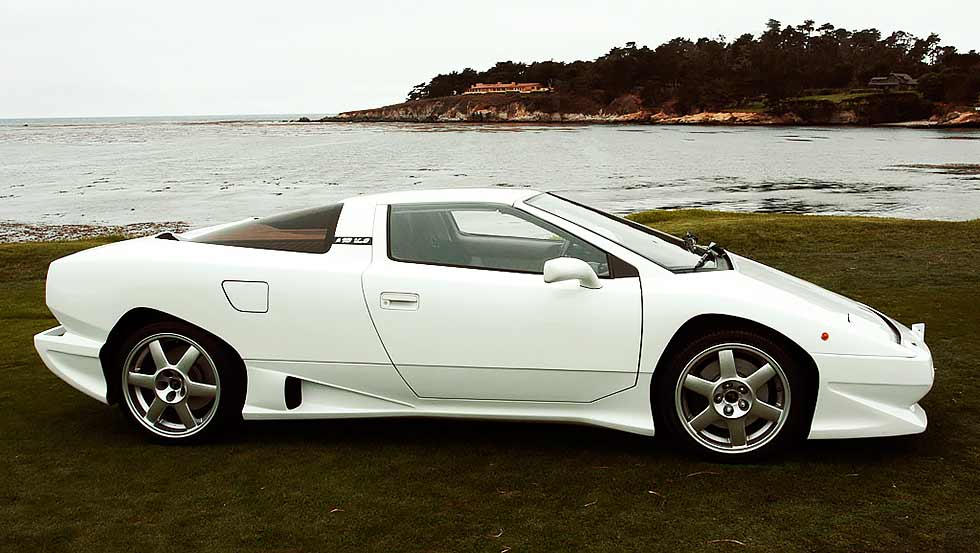
Outwardly, it’s odd that in terms of Lamborghini history, there’s quite a gap between the two most recent baby bulls. Between the end of the Jalpa in 1988, and the beginning of the Gallardo in 2003, you were limited to just the big ones – the Countach and Diablo. The P140 should have filled that blank in the company’s history.
Developed from the mid-1980s until the beginning of the ’90s, the compact V10-powered junior supercar was powered by an all-new 40-valve V10.
This was cutting-edge stuff in the mid-1980s, with the Lamborghini engineers developing the power unit in just seven months. The V10 was light and compact, and proved to be a winning formula, with Formula 1 moving whole-scale in this direction from 1989.
Three styling proposals were produced: Bertone, Chrysler Design and Marcello Gandini’s (above). Under the skin, it boasted a spaceframe chassis – and it was designed light. Lack of money meant the P140 was canned in 1992, but it was resurrected in concept form in 1995 as the Ital Design Cala. This was a cruel reminder of what might have been – we’d have to wait until 2003 for the Gallardo.
‘Rocking the two-three gearchange (they’re opposite on this box) to keep it pacey between the bends comes naturally’
CELLULOID STAR THE ROCKY IV JALPA
Could this be the car as used in Rocky IV? It’s possible. The paintwork is certainly the right colour. The likelihood is that it isn’t – according to lamborghini-talk.com one car purporting to be from the movie is in Switzerland. Worse news was that in 2009 it caught fire at the Nürburgring, but was being restored. However, a car ‘with the possibility of being the one from Rocky IV’ in America appeared on eBay a few years later, though close scrutiny of the details leads us to presume it wasn’t. Finally, a car in Pennsylvania lays a claim – but that car’s not been seen in a long while, and was in poor shape when it was. In reality, it could be one of 200 cars. Best to forget that, stick on No Easy Way Out and head off into the night.
‘The Jalpa isn’t conventionally beautiful. Leave the catwalk to its contemporary, the Ferrari 308 GTB’
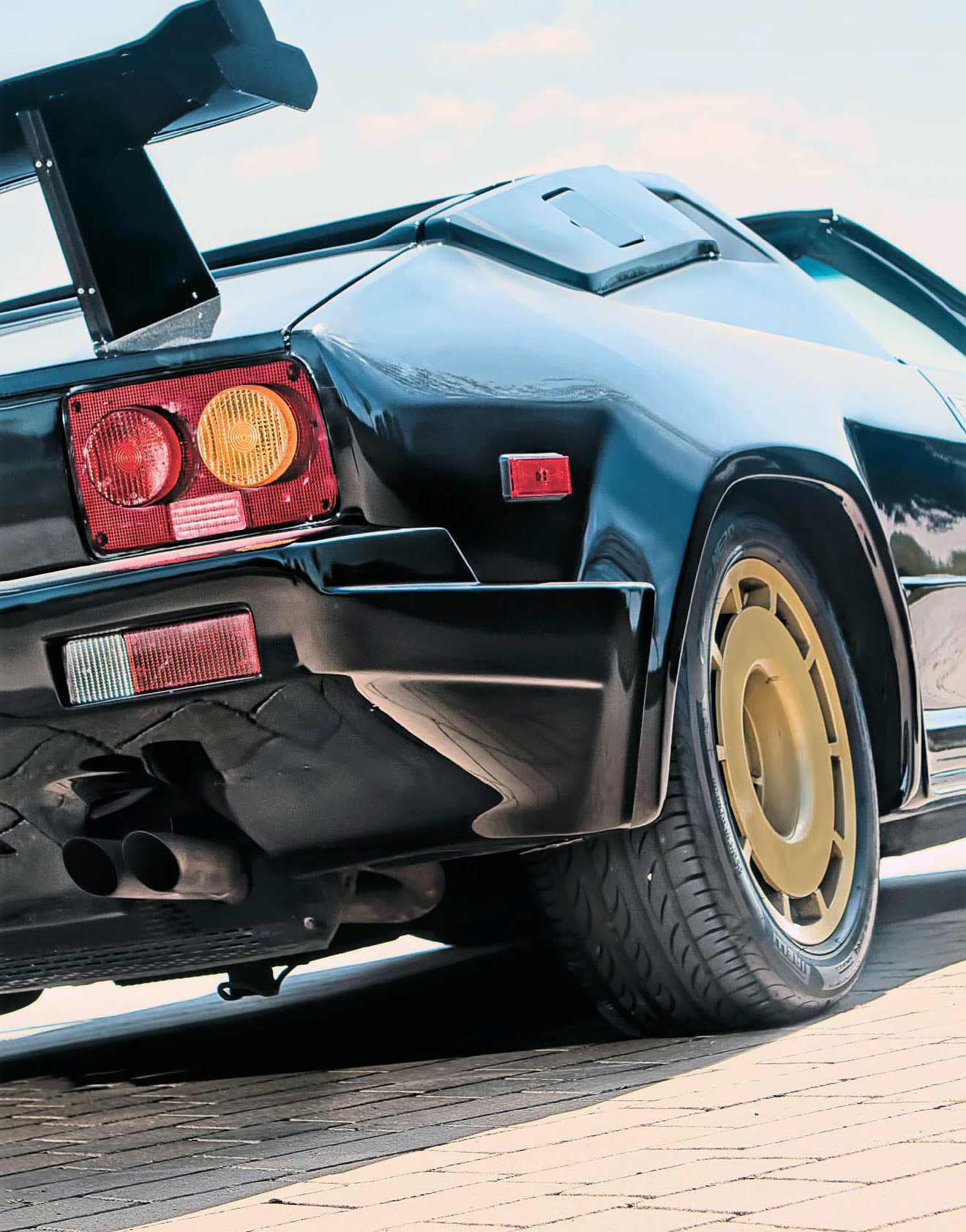
Bertone’s remodelling job on the Silhouette lost the rear seats and 100lb, but made huge gains in attitude.





